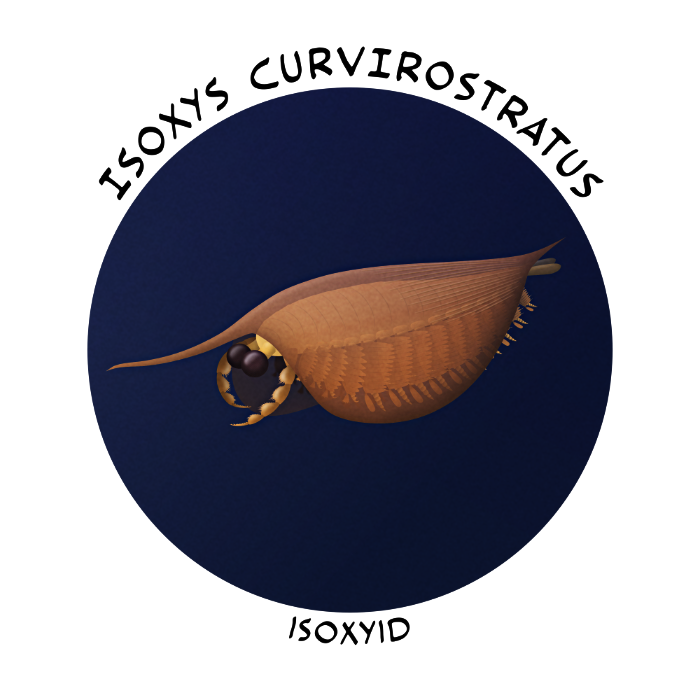Isoxyids were a group of small and somewhat enigmatic panarthropods found all around the world’s oceans during the mid-Cambrian, dating to between about 518 and 504 million years ago.
Their most distinctive feature was the large semi-circular carapace covering their bodies, with some species also having long defensive spines at the front and rear ends. They had spherical stalked eyes and two large appendages on their heads – sometimes shaped like sensory antennae, and sometimes like raptorial front appendages – but it’s unclear whether these were anatomically equivalent to the appendages of radiodonts or if they were convergently evolved from a different set of front limbs.
Their body limbs each had two distinct branches (a biramous condition), with a paddle-like structure fringed with gills above, and a slim jointed leg underneath. A small tail fan stuck out from the back of their carapace and was probably used for steering while swimming.
They’re generally considered to be more closely related to the true arthropods than the radiodonts were, although their exact position in the arthropod evolutionary tree is uncertain. Usually they’re placed as some of the most basal “stem-euarthropods”, while other studies have instead classified them as much more “advanced” euarthropods related to early mandibulates.

Isoxys curvirostratus is known from the Chinese Chengjiang fossil deposits (~518 million years ago). About 2-4cm long (0.8-1.6″), it was an active fast-swimming animal with large eyes and raptorial front appendages that curled upwards and inwards, suggesting it was a visual-based predator hunting smaller planktonic animals.
It may have been a vertical migrator, moving between different depths at different times of day.
